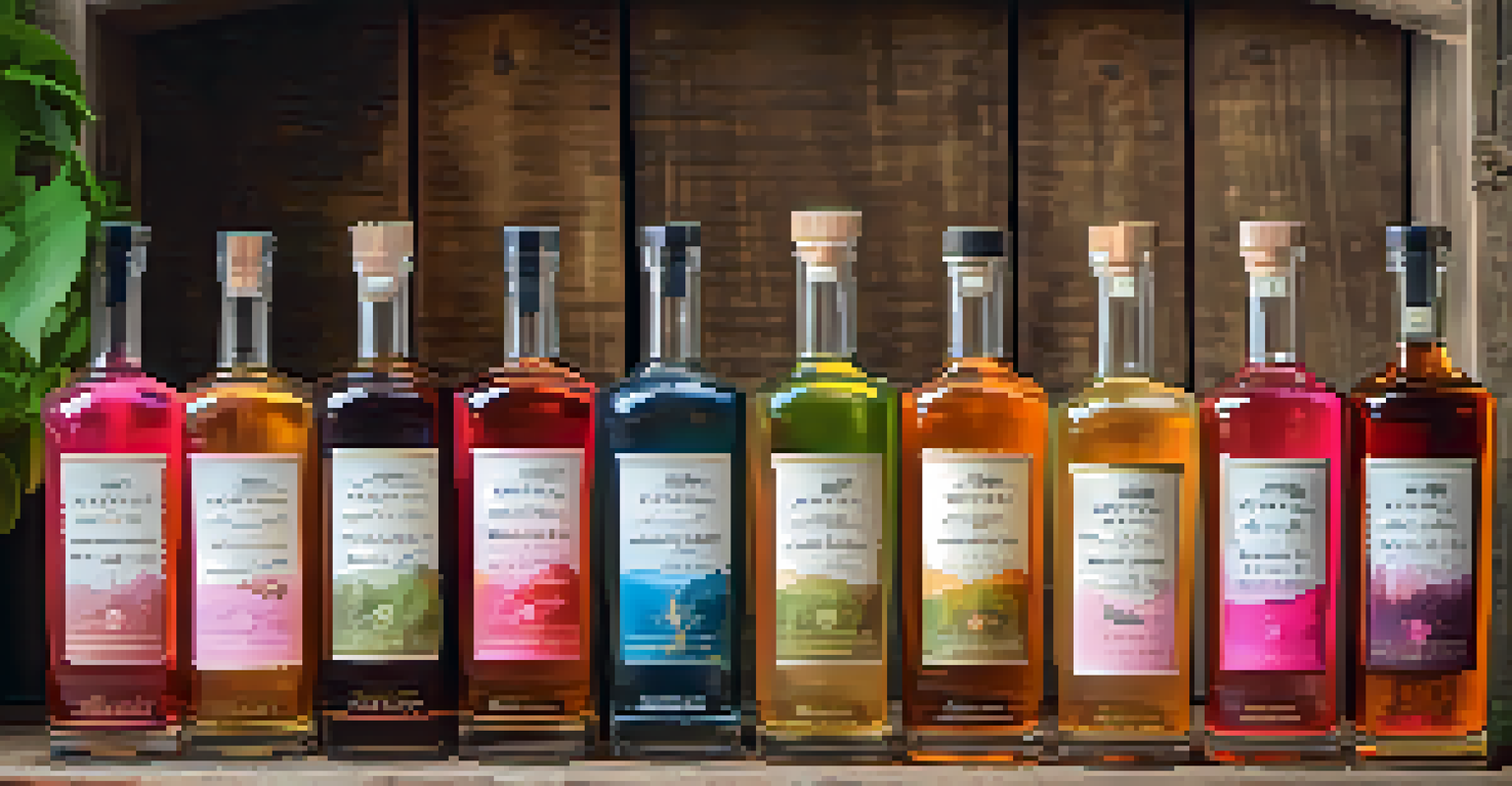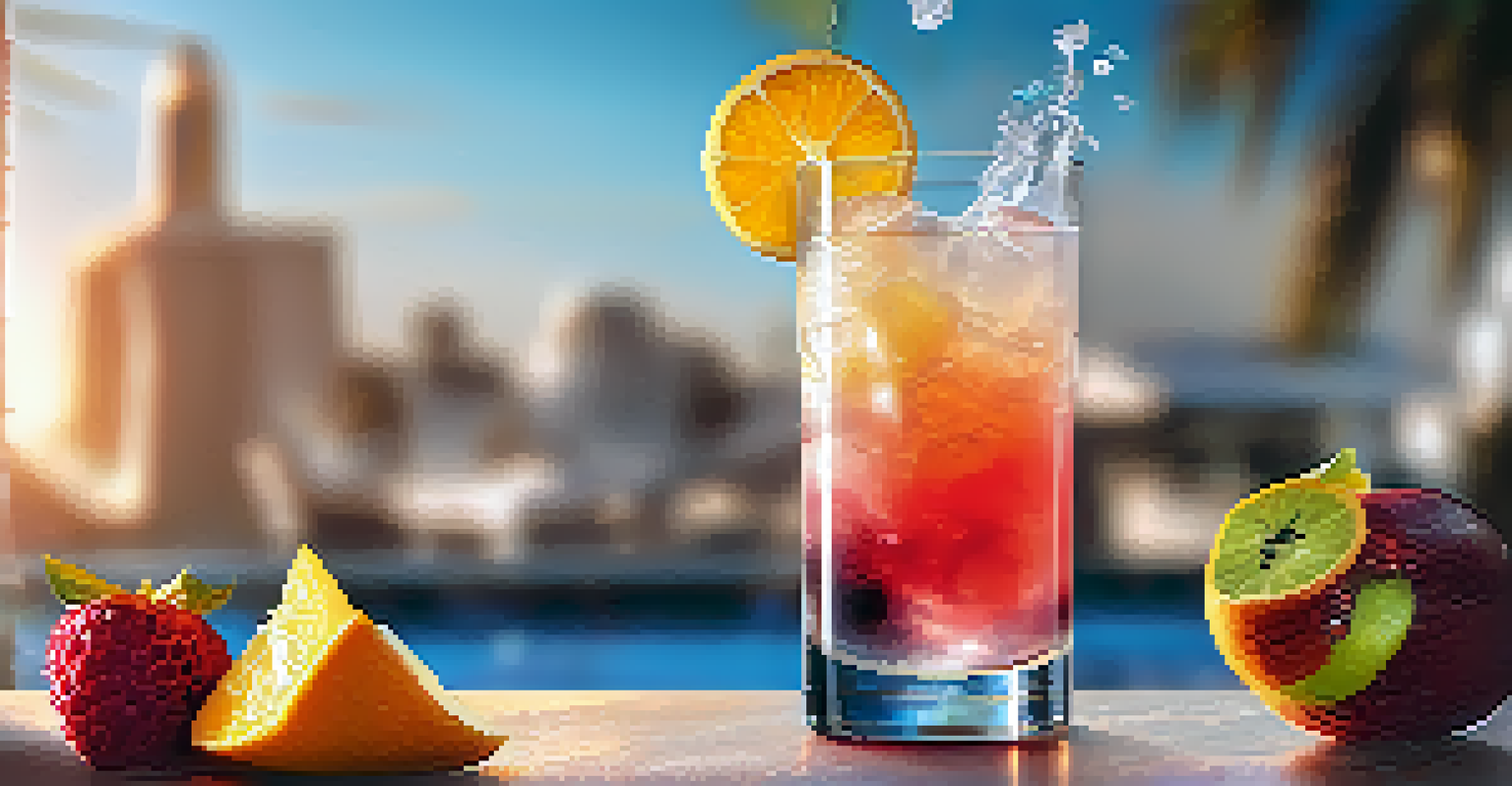Flavoring Your Home Distilled Spirits: Tips and Techniques

Understanding the Basics of Home Distillation
Home distillation is an art and a science, allowing you to create spirits tailored to your taste. It involves fermentation and distillation processes where you convert raw ingredients into alcohol. As you embark on this journey, understanding the fundamentals will set the groundwork for successful flavoring.
Good spirits are like good friends: they should be enjoyed, not endured.
Before you dive into flavoring, familiarize yourself with the types of spirits you can make, such as whiskey, gin, or vodka. Each spirit has its unique characteristics and responds differently to various flavoring techniques. This knowledge will help you decide how to approach the flavoring process.
As you learn about distillation, remember that patience is key. Quality spirits take time to develop, and the same goes for flavor. Take it step by step, and soon you'll be ready to add your personal touch to your creations.
Choosing the Right Base Spirit for Flavoring
Selecting the right base spirit is crucial for successful flavoring. For instance, a neutral spirit like vodka allows flavors to shine through without interference, while whiskey can add depth and complexity. Consider what flavor profile you want to achieve before making your choice.

Each base spirit interacts differently with flavoring agents. For example, rum pairs beautifully with tropical fruits, while gin harmonizes with botanicals. By understanding these relationships, you can enhance your creations in ways that surprise your palate.
Basics of Home Distillation
Understanding fermentation and distillation is essential for crafting personalized spirits.
Don’t be afraid to experiment! Mixing different base spirits can lead to unique flavor combinations. Just like cooking, the art of distillation encourages creativity, so trust your instincts and taste as you go.
Common Flavoring Agents for Distilled Spirits
When it comes to flavoring your spirits, the options are endless! Common agents include fruits, herbs, spices, and even flowers. Each brings a unique essence to your spirit, allowing you to craft a drink that reflects your personality.
The best way to learn about distillation is to practice it yourself.
For instance, infusing vodka with fresh berries creates a refreshing summer sipper, while adding herbs like rosemary to gin can evoke a garden-like aroma. The key is to match the flavor intensity of the agent with the strength of the base spirit.
Remember to start small when adding flavoring agents. You can always add more, but it’s challenging to fix an overpowering flavor. Taste-testing throughout the process will help you achieve the perfect balance.
Techniques for Infusing Flavors into Spirits
Infusing flavors into your distilled spirits can be done through several methods, each with its unique benefits. The most popular technique is steeping, where you simply add your flavoring agents to the spirit and let them sit for a period of time. This method is straightforward and effective.
Another technique is cold infusion, which involves placing the ingredients in the spirit without heat. This method preserves more delicate flavors, such as floral notes and subtle spices, giving you a refined final product. It may take longer but is worth the wait for the nuanced taste.
Choosing the Right Base Spirit
The base spirit you select significantly influences the flavor profile of your final product.
For those looking to speed up the process, consider using heat infusion, where you gently warm the spirit with the flavoring agents. This can extract flavors more quickly, but be careful not to overheat, as it may alter the spirit's character.
Understanding Maceration and its Benefits
Maceration is a technique that involves soaking flavoring agents in your base spirit to extract flavors. It’s a fantastic way to infuse your spirits with rich, complex tastes that can elevate your drinks. The longer you let the ingredients sit, the more intense the flavor will become.
This method is particularly effective for fruits and herbs, as the natural oils and juices meld beautifully with the spirit. For example, macerating fresh peaches in vodka creates an aromatic and fruity infusion, perfect for summer cocktails.
A key benefit of maceration is that it allows for greater control over the flavor profile. By tasting periodically, you can stop the process once you achieve the desired intensity, ensuring your spirit is just right.
Balancing Flavors: Sweet, Sour, and Bitter
Balancing flavors is essential in crafting a well-rounded spirit. Just like in cooking, where sweet, sour, and bitter elements play off each other, your distilled spirits should also achieve this harmony. Experimenting with different flavor profiles will help you find what works best for your taste.
Consider adding sweetness through honey or simple syrup, which can enhance the overall flavor without overpowering it. A splash of citrus can introduce a delightful tang, while a dash of bitters can add depth and complexity. Each element enhances the others, creating a symphony of tastes.
Infusion Techniques Matter
Different methods of infusing flavors, like steeping and cold infusion, can dramatically alter the taste of your spirits.
Always keep in mind that balance is subjective. What might taste perfect to you may not resonate with someone else. Encourage feedback from friends or family to refine your recipes and discover new ways to enjoy your spirits.
Storing and Enjoying Your Flavored Spirits
Once you've crafted your flavored spirits, proper storage is vital to maintain their quality. Store them in a cool, dark place, away from direct sunlight, to prevent degradation. Glass bottles with airtight seals work best to preserve flavor integrity.
As your spirits age, the flavors may continue to evolve. This can lead to delightful surprises as new notes emerge over time. It's a good idea to label your bottles with the infusion date so you can track their progression and enjoy them at their peak.

When it comes to enjoying your creations, think outside the box! Use your flavored spirits in cocktails, as a base for spritzers, or even in culinary dishes. The possibilities are endless, and sharing your homemade spirits can be a wonderful way to celebrate your hard work.